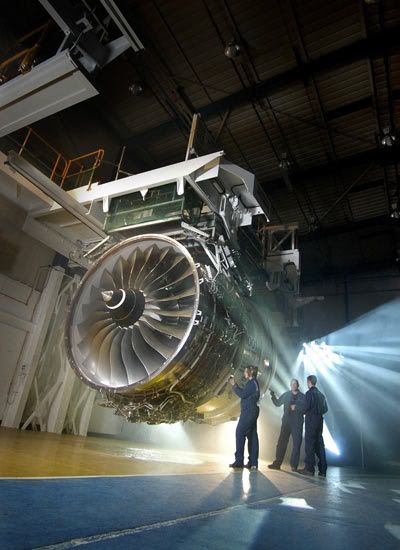The Trent 1000 was developed especially to power the Boeing 787 Dreamliner, designed especially for better fuel economy. The first test run for the Trent 1000 was on 14 February 2006, and to the joy of Rolls-Royce it went without a hitch.
The Trent 1000 is a bleedless design, with power take-off from the intermediate pressure spool instead of the high-pressure spool as is the case with the other Trent engines. It also has a 112in diameter swept-back fan, with a smaller diameter hub, to help maximise airflow.

The bypass ratio has been increased over previous variants by suitable adjustments to the core flow. Contra-rotating the intermediate pressure and high-pressure spools improve intermediate-pressure turbine efficiency.
The Trent 1000 started (electrically) first time, using a new design feature called IP power off-take, which reduces fuel burn, brake wear and noise output. This involves dual-use starter generators that act as both electrical starters on the ground and power generators whilst airborne.
In flight, power is created by mechanically driving the generators using the engines intermediate pressure compressor, including power for the cabin environmental conditioning system (ECS), rather than taking conventional bleed air.
Each Trent 1000 engine is capable of generating about 0.5MW of electrical energy to power the increased number of electrical systems used in the Boeing 787. It has 15% lower fuel burn than engines from a decade ago, and when first developed, delivered 40% fewer emissions into the atmosphere than was required by international legislation.
With a range of thrust from between 53,200lb to 75,000lb, the Trent 1000 is capable of powering all versions of the 787 Dreamliner. Further developments for the Trent 1000 engine on the Boeing 787 include the use of intelligent engine health monitoring (IEHM) systems. This utilises predictive maintenance technology, which reduces maintenance disruption and increases wing time.


